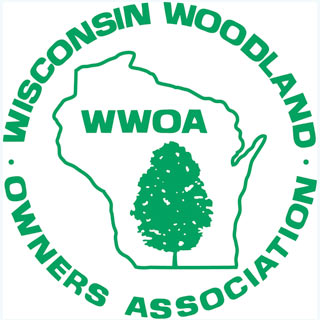Early in the morning, if you listen intently, the distinct song of the Golden-winged Warbler can be heard on the five acres of recently sheared tag alder in Marinette County, Wisconsin. Through an RCPP project, Jim and Katie Matykowski managed their tag alder to create early successional habitat for the Warbler, helping to bring back the population from decline. Learn more and see photos at NRCS.
Jim and Katie Matykowski are ecstatic over the news of creating vital early successional habitat for this near threatened species. The Matykowskis bought 130 acres back in 1989 and started actively managing their forest right away to benefit the natural resources and wildlife they enjoy on the property.
“Some woodland owners don’t want to do anything to their acreage, but if you cut and manage according to a plan, you are helping your woods thrive and regenerate and can help wildlife too,” explained Jim.
The Golden-winged Warbler is a sharply declining songbird that prefers shrubby, young forest habitat in the Great Lakes region. Today, early successional habitats are on the decline due to forest succession, development and other changes in land use. That’s why the Natural Resources Conservation Service (NRCS), the American Bird Conservancy, and private landowners, like the Matykowskis, have teamed up through the NRCS Regional Conservation Partnership Program (RCPP). The partnership focuses on creating habitat for the near threatened Golden-winged Warbler, which has seen one of the steepest population declines of all songbirds. According to American Bird Conservancy, the Golden-winged Warbler’s population has declined by 66 percent in the last 50 years.
The Matykowskis met Jeff Maroszek, Marinette County NRCS district conservationist, at a local field day. Jeff talked to Jim and Katie about their property and learned about 5 acres they owned of unproductive land covered in dense tag alder. “The 5 acres we had were very wet and pretty useless. You couldn’t even walk through the area because of the dense alder and excess moisture. We were stumped as to how to make these acres productive and useful,” explained Katie. “When we talked with Jeff, he told us about technical and financial assistance available to private landowners through RCPP, targeting mature tag alder to create early successional habitat for the Golden-winged Warbler.”
Jim and Katie met with NRCS at the local USDA Service Center, to apply for funding. “The tag alder was 12- to 15-ft high and it also created greater than 75 percent canopy cover on the site. These characteristics were some of the site conditions we were looking for,” explained Jeff.
The Matykowskis property met site conditions and was approved through RCPP for early successional habitat development through regeneration of mature alder stands. The site was very wet and a challenge to get into without a hard freeze. “The first winter, we had around 40 inches of snow and everything was very wet; we had to wait a year, until we had a hard freeze to get the equipment in there to shear the tag alder, but it was well worth it,” added Jim.
Once sheared, the alder was around 6 inches or less in height. Scattered residual trees greater than 4 inches in diameter (5-15 per acre) were maintained for perch trees. The sheared tag alder provides excellent early successional habitat for Golden-winged Warblers, including food, cover and nesting opportunities.
“We were thrilled to hear we had Golden-winged Warblers on the acreage, and we’ve seen so many new species ever since the shear, not just Warblers. Even just your everyday birds, we are seeing so many more robins and other songbird species too,” explained Katie. “We are so thankful we connected with Jeff at that field day and he explained the benefits of how RCPP could work for us.”
The Matykowskis plan to continue to keep their land maintained and managed properly. “Working with the NRCS on active forest management helps us stay on track and be progressive. They have so much knowledge and can help us leave this land better than when we got it,” explained Katie. “It’s been such an honor to own this land. I like the peace and quiet, with only sounds of nature out here; knowing we’re managing it the best we can while it’s ours, and for the future, we’re excited to do that,” added Jim.
The Regional Conservation Partnership Program is a partner-driven approach to conservation that funds solutions to natural resource challenges on agricultural land. By leveraging collective resources and collaborating on common goals, RCPP demonstrates the power of public-private partnerships in delivering results for agriculture and conservation.
